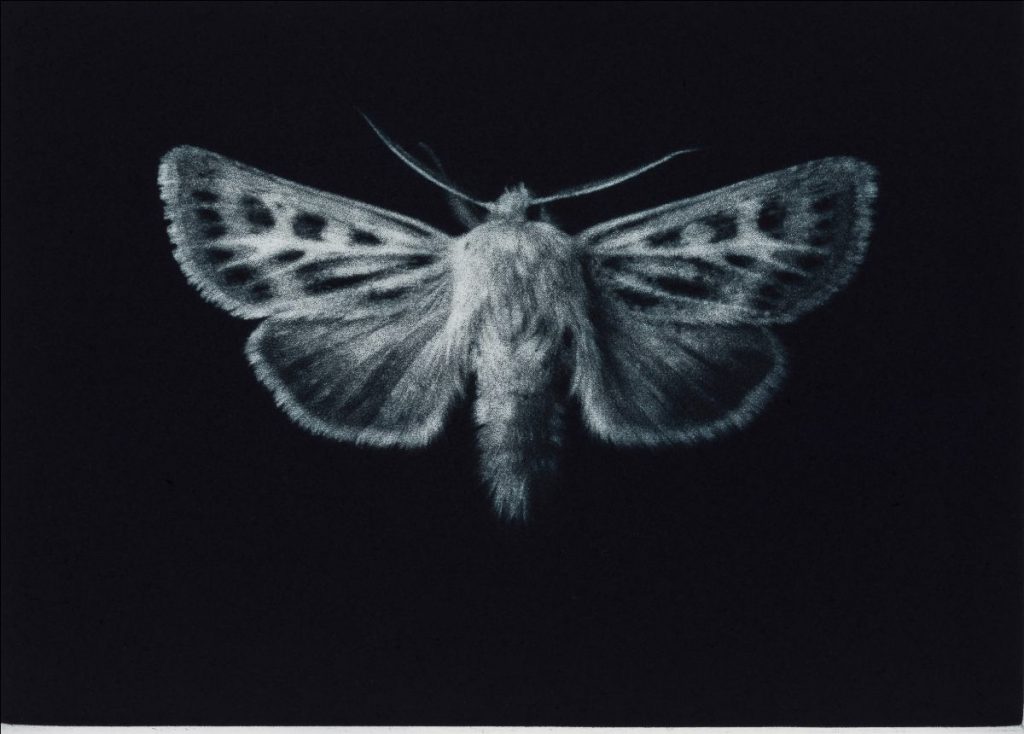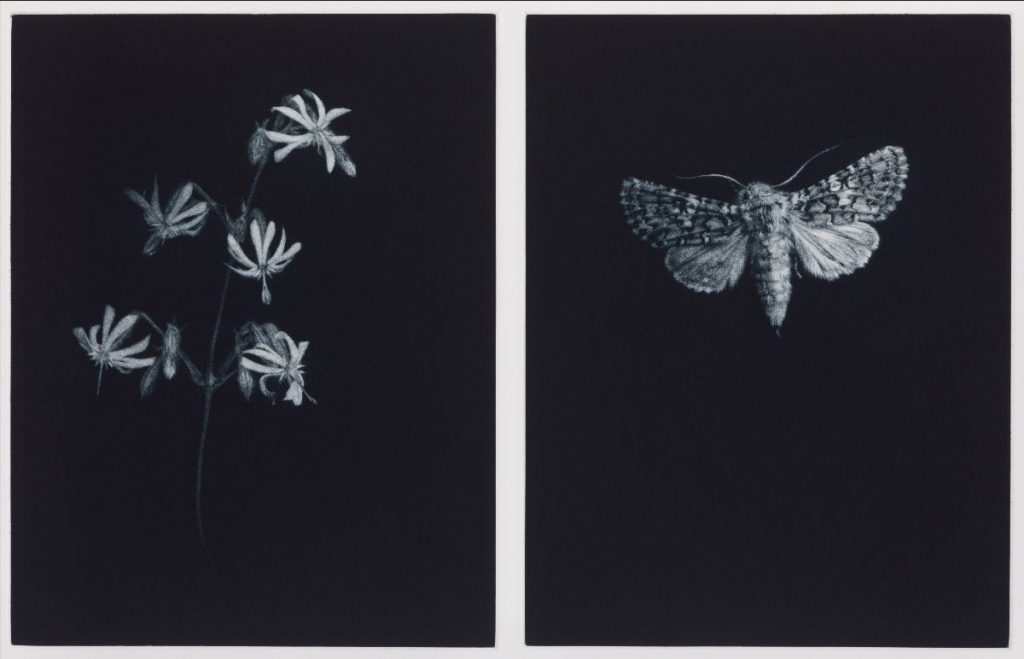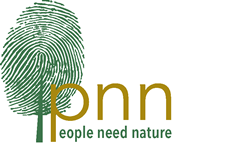I met artist Sarah Gillespie at last year’s New Networks for Nature conference in Bath. Sarah uses the Mezzotint method, to create exquisite artwork of British Moths and other species. Mezzotint is a method of engraving, creating an image on a copper plate, using a fine-toothed tool called a rocker, which originated in the 17th century. Mezzotint is particularly effective at portraying the intricate beauty of nature.
Sarah’s primary interest is “in making an art that is devoted not to self-expression but to the fragile life of our fellow sentient beings – moths, trees, and birds.”
I received this newsletter from Sarah and asked if I could share it with our readers, to which she was happy to agree.
Dear Friends,
I write to you sitting under the bluest of morning skies in Cambridge. News of what I’m doing here further down this mail…
First though, to tell you of two new mezzotints linked to events this May, June and July:
‘Antler Moth’ will be shown for the first time at the London Original Print Fair next week. It is available both as part of ‘Rabley 22’, a folio of new works from Rabley Gallery artists, or simply on its own. If you would like to pre-order one, the link to Rabley is here Link to Somerset House and tickets to the print fair here

Antler Moth 195mm x 240mm Mezzotint. An edition of 20 printed in blue/black, with a further edition of 10 in sepia
Back in 2019 curators Prudence Maltby and Dr Elisabeth Darby working with Salisbury Museum invited a small group of artists to respond to historic books on entomology. Inevitably Covid delayed the project but I’m so pleased to be able to announce that it is now finally happening.
The museum writes: “The exhibition offers an insight into the insect world through the visual responses and interpretations of contemporary artists and makers to the entomological publications which, since the 17th Century, have recorded and illustrated these intriguing creatures.
The selected artists working in different disciplines and media mirror the rich diversity of the insect world. Through the varied scales and materials employed in the new works, and through the narratives embedded in them, the aim is to draw attention not only to the myriad physical and behavioural characteristics of insect populations, but also to the historical, cultural, and social associations they evoke. Insect Odyssey celebrates contemporary artistic practice, champions the relationship between art and science, and highlights the crucial role played by insects in the environment.”
For the exhibition I have made a diptych of the vespertine Nottingham Catchfly flower and its associated moth, the White Spot. While the night-scented flower, (a member of the campion family) attracts many nocturnal insects, the White Spot Moth is entirely dependent on the seed heads of the catchfly as its larval food plant. Both plant and moth are now rare and endangered, threatened by habitat loss.
Details of the exhibition are here

Nottingham Catchfly & Whitespot Moth Mezzotint engraving in an edition of 30
295mm x 226 mm (x2)
So to Cambridge… yesterday I begin six months as an ‘Artist in Residence’ with the Arts, Science and Conservation programme at the CCI (Cambridge Conservation Initiative) which is based in the David Attenborough Building, Cambridge. I’ll be working with the IUCN (International Union for the Conservation of Nature) and the University Museum of Zoology. CCI have given me a loose brief to look at moths that are endangered, very endangered….and those on the very brink of extinction.
The move from commonplace and familiar presences, to the increasingly absent is not a comfortable one. The patient, dedicated and vital work of scientists presents to the world in a language that is tightly measured, laden with statistics and bound with caveats; There are so many acronyms, so many appendices, a thicket of diagrams and charts… Reading and researching over the last months in preparation for this work, and just today discussing the finer points that distinguish and define ‘extinction’ and ‘ecosystem collapse’ I find myself wondering if a retreat into rules and statistics might be a very human way of coping with the unknowableness and uncertainty of what seems to be a runaway and out of control catastrophe.
This morning however, there are Swifts screeching in the blue above the ancient colleges, they’ve made it, the world still turns but there is no doubt there are fewer every year. What to do with this time? I am reminded of the words of the great Toni Morrison:
“Art invites us to know beauty and to solicit it from even the most tragic of circumstances. Art reminds us that we belong here. And if we serve, we last.”
Wishing you well,
Sarah

Comments are closed.